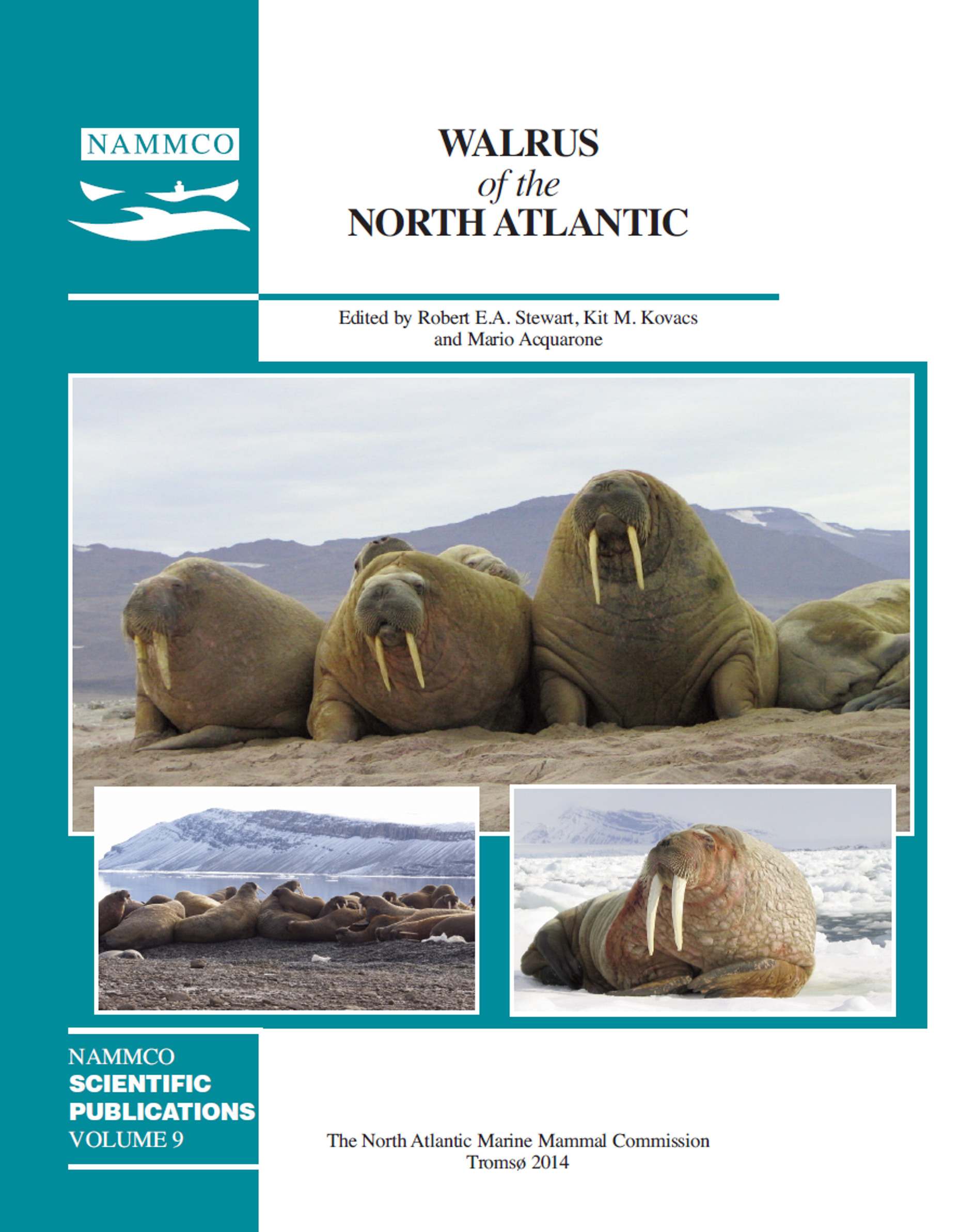Population dynamics of walruses in Greenland
DOI:
https://doi.org/10.7557/3.2612Keywords:
walrus, Odobenus rosmarus, population dynamics, GreenlandAbstract
The historical and current dynamics of the three Atlantic walrus (Odobenus rosmarus rosmarus) populations that occur in Greenland are estimated using age- and sex-structured population models with exponential growth, density-regulated growth and selection-delayed dynamics. These models are integrated with data in a Bayesian framework, where the likelihood of the simulated population trajectories are evaluated from recent abundance estimates and age-structure information from a selective hunt.
The overall decline in the Baffin Bay population caused by historical catches is unclear due to incomplete catch reporting prior to 1950s. However, it is estimated that the population declined by 40% from the 1960s to 2005; decreased catches (≈ 140 to ≈ 70) have subsequently allowed this population to increase. The 2012 abundance estimate is 1,400 (95% CI: 1,000-2,000) individuals, and the annual natural growth rate in this population is now 7.7% (95% CI: 6.7-8.9%).
Averaging across models, it is estimated that West Greenland/Baffin Island walruses declined by 80% from 7,000 (95% CI: 5,400-10,000) in 1900 to 1,350 (CI: 950-1,950) in 1960. Hereafter they increased to 3,100 (95% CI: 2,500-4,400) in 1993, and owing to increased catches they have experienced a minor decline between 1994 and the early 2000s. Annual catches where then cut from 190 to the current quota of 61, and the population is again increasing with a 2012 estimate of 3,900 (95% CI: 2,500-5,300) individuals.
A 2012 estimate of 1,400 (95% CI: 700-3,100) walruses in East Greenland is recovered relative to 1888; the year prior to our first historical catches by European sealers. The historical trajectory, however, is uncertain: Density regulation estimates a relatively flat trajectory, with a maximal depletion in 1890 to 80% of the initial abundance, and a slow continuous increase to almost no current growth. A recovered population is also estimated by selection-delayed dynamics. However, this model estimates a continued increase, and a historical depletion to 2% in 1957.
These results are only partially comparable with an earlier assessment for East Greenland. Updated abundance estimates for West Greenland, and modelling with age-structured data from Baffin Bay, have greatly improved our status estimates for Baffin Bay and West Greenland/Baffin Island.





